Cacti are an exciting houseplant genus that has a big impact on an interior and often lives alongside its owners for generations. This classic plant’s comeback is particularly due to the fact that it’s a very easy houseplant with a sculptural look.
Origin of Cacti
Cacti are native to a large territory in North and South America, with a strong concentration in Mexico. The plants mainly grow in dry desert regions where they have adapted brilliantly to the extremely dry condition. The spikes, glochids (barbed bristles) and bundles of long hairs not only defend the plant from being eaten, but reduces the amount air flow around the plant and therefore reducing water evaporation from the plant. A waxy layer around the plant also contributes to minimise the evaporation.
The name cactus is derived from the Greek word ‘kaktos’, which means ‘spiky plant’. Every cactus is a succulent, but not all succulents are cacti. Like many other succulents, cacti have succulent properties – the ability to store moisture in their thick fleshy trunk and stems. These reservoirs are used to bridge periods of drought. Cactus roots are strongly developed and are usually just below the surface in order to slurp up as much water as possible during rainy periods.
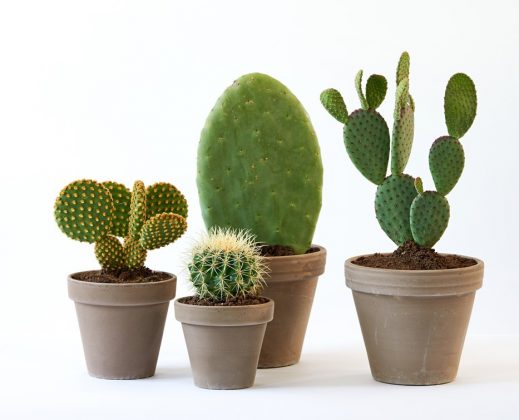
Cacti range
The range of cacti is enormous and extends from tiny sleek shapes through to bizarre massive pillars, and from soft grey hairs through to big sharp thorns. The species that are most commonly available are Echinocactus, Ferocactus, Gymnocalycium, Opuntia and Mamillaria.
Succulent Euphorbia species closely resemble cacti and are often displayed with the cacti although Euphorbia has spikes and thorns grow directly out of the green body, whilst on cacti they grow out of the areolae, the thickenings/bumps on the green body.
Calyxes can be classified by genus, origin or shape. The following groupings apply to the shapes:
- Disc cactus: produces edible fruit, watch out for the hairs (Opuntia)
- Dillar cactus: upright shapes that start small and develop a real pillar shape later (Pachycereus)
- Rock cactus: rock-like shape (Cereus)
- Creeping cactus: small horizontal stem (Selenicereus)
- Globe cactus: attractive globe shape (Echinocactus, Mamillaria)
- Hanging cactus (Aporocactus)
- Epiphyllum group: epiphytic cactus (Epiphyllum)
- Grafted cactus: Two species grafted onto one another (Gymnocalicium)
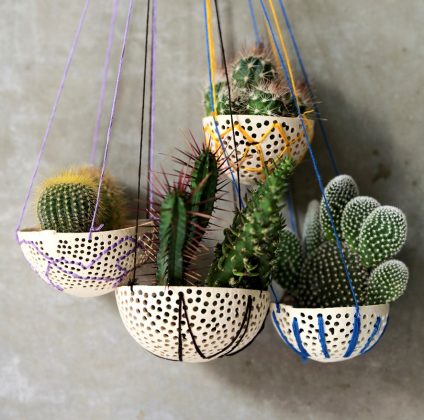
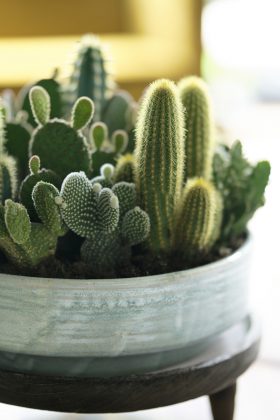
Grow Guide
- It’s easy to look after cacti. To get the plants to flower every year, it’s best to give more water in the summer and less in winter. This partly dependent on the species and size of the plant.
- Too much water is never good. It’s better to allow the soil to dry out a bit before watering the plant again.
- A cactus can tolerate a warm and sunny spot in the summer, even outdoors on the patio or balcony. The placement should be cooler and light in the winter. This hibernation period in the winter helps the cactus to flower in the spring.
- If the plant needs repotting, use a fairly nutrient-poor soil. Special cactus soil is available for this.
- Place the plants in a safe place if there are children or pets around.
- Try combining cacti for an exciting display piece in a bowl, terrarium or bell jar. Make sure that the latter have a ventilation hole.
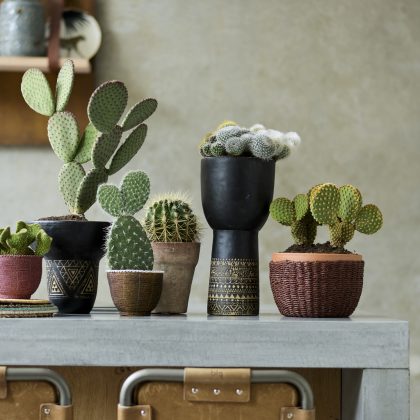
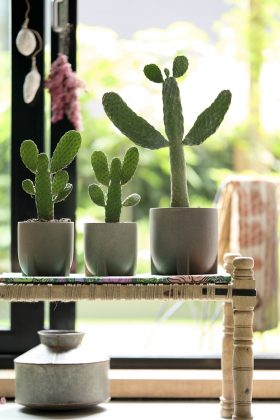
Images courtesy of Thejoyofplants.co.uk and text courtesy of The Flower Council Holland.




